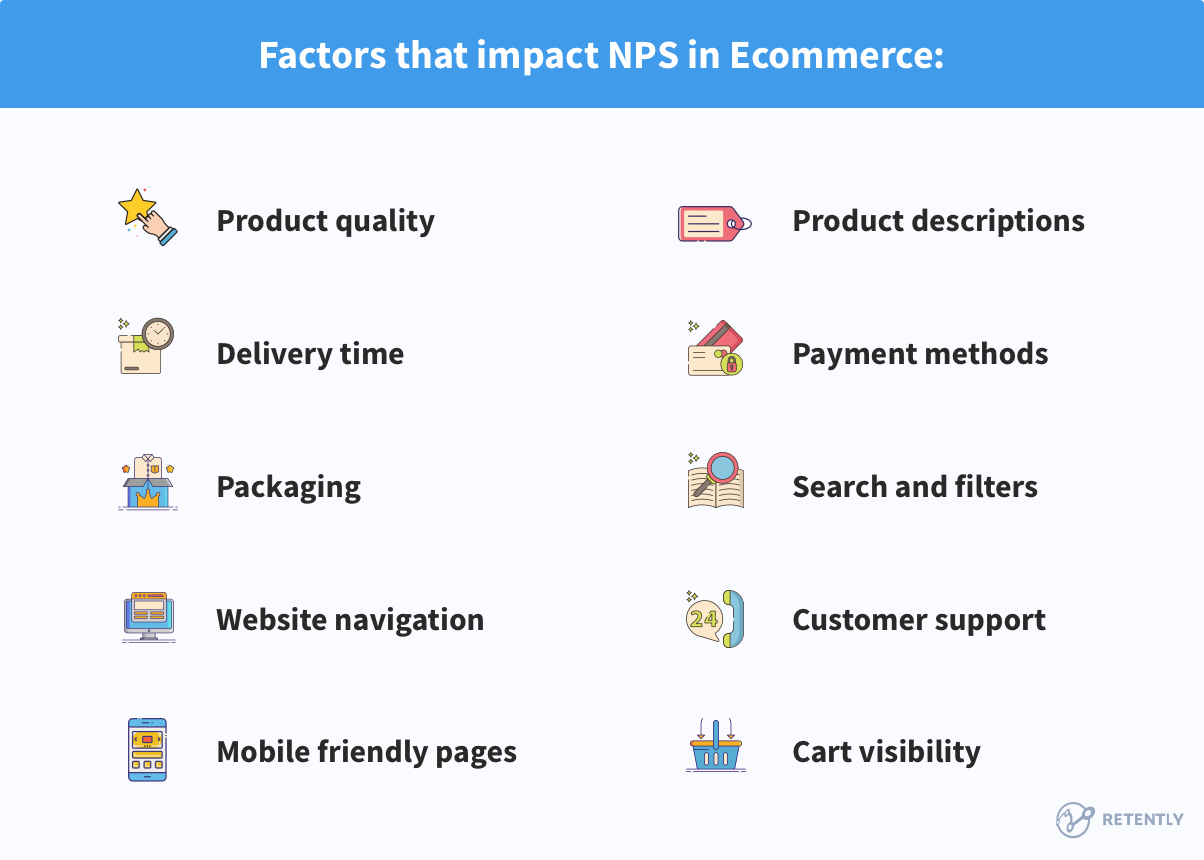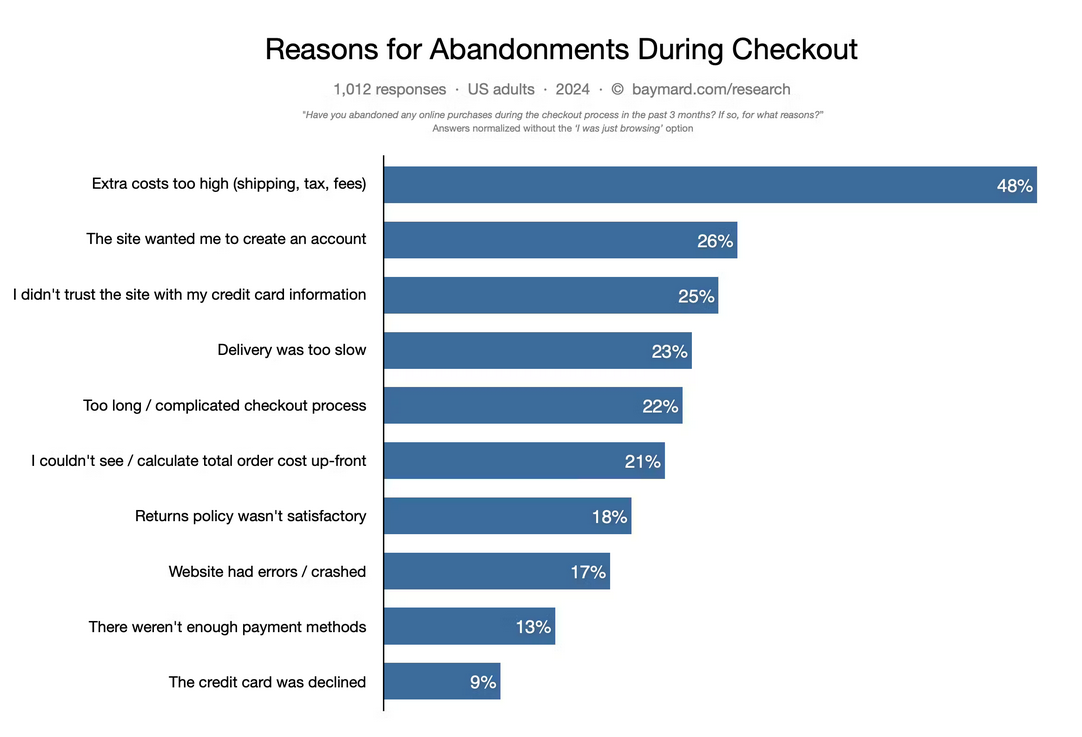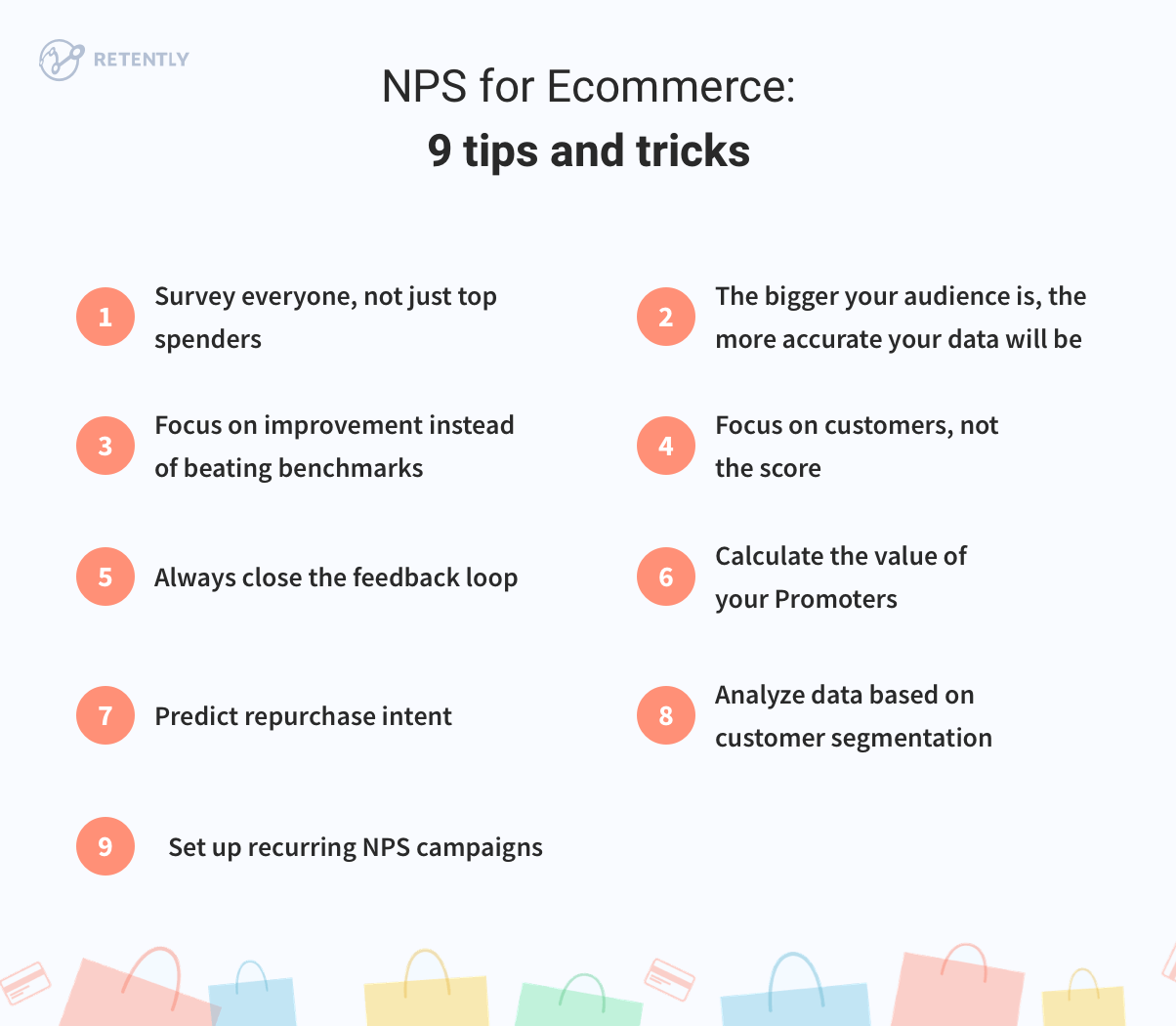Table of Contents
- Key Takeaways
- 1. Survey All Customers, Not Just Top Spenders
- 2. Don’t Overthink the Statistics
- 3. Focus on Improvement, Not Beating the Benchmarks
- 4. Pay Attention to CLV More Than the Score
- 5. Always Close the Feedback Loop
- 6. Calculate How Much Each Promoter Is Worth
- 7. Predict Repurchase Intent
- 8. Analyze Data Based on Customer Segmentation
- 9. Set Up Recurring NPS Campaigns
- Start Using Net Promoter Score to Grow Your Business
As an ecommerce business, Net Promoter Score® might be the most powerful KPI in your CX toolkit.
You can get by without paying attention to NPS, but you will thrive when using it as a growth north star.
Net Promoter Score is a metric that measures the likelihood of a customer recommending your brand to their personal and professional social circle. The higher your NPS, the higher the chance that your customers will turn into active Promoters and enthusiastic advocates for your products.
Earning and retaining loyal, happy customers is rarely something that happens by chance. Far more often, it’s the result of a deliberate, scalable process. Moreover, with NPS, you also have a deeper understanding of how effective your existing marketing is at acquiring customers.
Would you like to include NPS in your ecommerce customer acquisition and retention process to win over and retain more clients? Below, we’ve listed 9 tips & tricks for using Net Promoter Score to earn loyal customers and generate more revenue from your ecommerce business.
Key Takeaways
- Collecting feedback from a diverse range of customers, not just top spenders, provides a well-rounded understanding of overall customer sentiment.
- Continuously improving based on customer feedback, like fixing shipping or website issues, builds greater loyalty than just trying to beat industry averages.
- Segmenting customers by behaviors and preferences enables tailored approaches, enhancing the overall customer experience by meeting specific needs.
- Quickly addressing customer feedback can turn unhappy customers into loyal fans, while recognizing and encouraging Promoters helps drive business growth.
1. Survey All Customers, Not Just Top Spenders
Calculating your Net Promoter Score and effectively measuring customer satisfaction with your brand depends on surveying an accurate and representative sample of your customers. If your post-purchase survey only reaches a certain group of customers, it could produce an artificially high or low score, making it difficult for you to take action.
For example, if your online store allows both registered and unregistered customers to check out, it’s important to survey both groups. If only registered customers take part in your NPS survey, there’s a risk of them producing an artificially high score.
NPS depends on consistency. Along with reaching a fair sample of your customers, it’s vital to you use a consistent process to prevent results from being skewed by audience segmentation.
2. Don’t Overthink the Statistics
Because NPS requires customers to rate their experience on a 0-10 scale, it takes more data to produce an accurate score than a simple Yes/No survey.
When you survey a small number of customers, there’s a risk of outliers producing a score that doesn’t accurately reflect customer sentiment. The smaller your sample audience, the greater the risk.
Many small stores simply don’t get enough orders for a relevant NPS process that would allow them to accurately track improvements on a monthly basis. With a small audience, monthly fluctuations in your NPS score can result from statistical noise instead of real data.
Make sure that your sample size is large enough to produce statistically significant data. For small merchants, this could mean taking a longer-term approach to tracking progress in order to avoid false positives.
Since NPS is a volatile metric, focus on closing the feedback loop and addressing the issues reported by customers. That would have a greater impact on your business than getting a statistically significant NPS survey result.
3. Focus on Improvement, Not Beating the Benchmarks
CX benchmarks are useful figures for estimating the range your Net Promoter Score can fall within, but you shouldn’t make any judgments about its performance without looking into the context.
Most NPS benchmark reports group businesses into broad categories. Small stores are placed in the same category as giants like Amazon, and regional airlines are grouped with international carriers.
As a result, the average NPS in your sector may not accurately reflect the type of experience that customers have with your business. Instead of trying to beat the mean, focus on continually improving your Net Promoter Score over the long term.
4. Pay Attention to CLV More Than the Score
The biggest strength of the Net Promoter Score – its simplicity – also has the potential to be a major weakness.
As a brand, it’s easy to focus entirely on your Net Promoter Score as a number, with a tunnel vision-like approach to moving the number upwards at all costs. This ultimately misses the point of NPS, which is to measure and improve customer experience and satisfaction.
In ecommerce, a single factor can often turn what could have been a positive experience into a negative one. Slow shipping, poor packaging, or product photos that didn’t accurately reflect the actual item are often all it takes to turn a potential 10 into a one or even a zero.
The majority of ecommerce business owners think that the product is the most important aspect that influences customer experience, with shipment and delivery coming next. It is true, but these aren’t the only business areas to take care of. Even if the product is of premium quality, there are many details that can influence the overall satisfaction and the score.
Any flaws in the purchase process can lead to dissatisfaction. Before customers get the product delivered, they will spend a lot of time on your website, and if their experience isn’t of top quality, they will never become promoters of your business or even get through with their purchase, abandoning the cart mid-way.
A website that is hard to navigate, is not mobile friendly, with no or few options to filter the products, unreliable search, plain descriptions, hard-to-locate cart, topped up by limited or insecure payment methods and lack of timely support across channels, will divert customers away, regardless of the product quality.

In fact, the impact of these issues is obvious in the staggering statistics surrounding cart abandonment rates. The Baymard Institute reports that the average shopping cart abandonment rate is about 70%. Let’s look into some hard numbers for critical factors that directly affect customer satisfaction and your NPS:
Delivery Time and Cost
High shipping costs and slow delivery times are major turn-offs for customers, with 48% of shoppers abandoning carts because of extra costs like shipping and taxes, and 23% due to delays.
To keep your customers happy, partner with reliable couriers and offer different shipping options, like standard, expedited, and same-day delivery. Make sure to show shipping costs and delivery dates clearly upfront to prevent cart abandonment. Real-time tracking can also help by keeping customers in the loop.
Plus, offering free shipping on orders over a certain amount or for loyalty members can be a big win, as 79% of consumers prefer online shops that offer free shipping. If there are any delivery issues, handle them quickly with refunds or discounts to maintain trust and turn unhappy customers into loyal ones.
Website Usability
Making your ecommerce website user-friendly is key to reducing cart abandonment and keeping customers satisfied. Consider this:
- Forrester Research found that 50% of potential sales are lost because users can’t find what they need. Ensure clear menus and a robust search function, with advanced filtering options.
- Google reports that 53% of mobile users abandon sites that take longer than three seconds to load. Make sure your site is fast-loading and mobile-friendly.
- 22% of shoppers abandon carts due to a complex checkout process. Streamline the process, offer guest checkout options, and use clear progress indicators. Keep the cart icon visible and accessible from any page for easy review.
- 26% of shoppers abandon carts if forced to create an account and 21% leave due to unclear costs. Offer a guest checkout and be upfront about all costs.
Payment Systems Flaws
In 2024 alone, 25% of online shoppers abandoned their carts due to concerns about credit card security, 13% due to limited payment options, and 9% due to credit card declines. Here’s how you can turn these numbers around:
- Offer a range of trusted digital wallets, mobile payment solutions, and flexible buy-now-pay-later services to cater to different customer preferences.
- Use robust encryption methods and display security badges prominently to reassure customers that their data is safe.

Gaps in Customer Support and Service
Ensuring your customers can reach you easily across different platforms is a must. Today’s consumers use about 13 channels, including emails, social media, live chats, and more, expecting consistent and swift responses no matter where they click. Consider deploying live chat to your website for immediate problem-solving, or use chatbots to handle basic inquiries, freeing up your team for more complex issues.
Your team needs to understand and meet customer needs, improving the experience at all times. Incorporating NPS into employee performance can help you get the right outcome. Forrester Research shows that 77% of consumers value their time as the most important aspect of service. Training your team to be efficient and empathetic can significantly boost your NPS.
Strategic Personalization
Even if you do everything right, there is another aspect to consider that improves customer experience and namely personalization. Research shows that 80% of shoppers are more likely to buy from companies that tailor their shopping journey to their preferences.
Using customer data is key. Analyzing purchase history and browsing behavior allows for personalized product recommendations.
Effective strategies include personalized email campaigns with targeted product suggestions, special offers, and abandoned cart reminders. Website content can be customized to show recently viewed items and suggest complementary products. Offering personalized discounts based on browsing and purchase history can also boost sales.
Takeaway: When you review your results, don’t just look at the numbers. Review comments from customers, especially from your Detractors. In doing so, you’ll often discover the small but significant flaws in your sales, payment, and order fulfillment processes that hurt the CX.
5. Always Close the Feedback Loop
The most important element of the NPS process is closing the feedback loop: a process of taking action and responding directly to a customer’s concerns, complaints or praise.
When a Detractor speaks their mind and gives your brand a low score, you should respond as quickly as possible. An effective service recovery process can help you win back customers that feel mistreated, and even turn them into satisfied, enthusiastic Promoters.
In many cases customers will complain about the same thing, so fixing these pain points promptly will decrease dramatically dissatisfaction levels, relieve your workforce and boost retention rates.
Data shows that a 5% increase in customer retention can result in a 25% to 95% improvement in profit. As an ecommerce store, establishing a service recovery process to close the loop with Detractors should be one of the first steps you take after implementing NPS.
6. Calculate How Much Each Promoter Is Worth
It’s well uncommon for businesses to work extremely hard to win over Detractors while failing to leverage their Promoters.
Your Promoters are a valuable marketing asset. Given the right tools and incentives, they can bring in a consistent flow of new customers. With 83% of consumers completely or somewhat trusting the recommendations of friends and family (increasing to 88% over the years) and 66% trusting opinions posted online – the value of Promoters and user-generated content becomes even greater, especially for online shopping.
One of the most important steps in using NPS to improve customer retention and acquisition is calculating the value of your Promoters.
By implementing a referral program that incentivizes advocacy and word of mouth, you can track the revenue each Promoter produces for your business. Over time, this lets you calculate a lifetime Promoter value similar to the customer lifetime value (CLV) metric used for customer acquisition.
Quantifying the value of Promoters is an important step in implementing NPS over the long term, as it puts a real figure on the value of delivering a great experience. Instead of just knowing that Promoters are a great result, you can assign a specific value to each new Promoter you earn.

7. Predict Repurchase Intent
NPS is a useful metric when it comes to predicting purchase behavior. The higher the score, the higher the probability of new & recurring purchases, as Promoters will gladly provide word-of-mouth advertising attracting new customers.
Naturally, Detractors will most likely never come back, Passives may keep buying as long as they don’t have a better alternative, and Promoters are your most loyal clients bringing the lion’s share of the profit.
Unlike customer satisfaction surveys, which capture data specific to the moment, NPS measures the overall loyalty and satisfaction of customers giving a broader picture of a company’s performance and is more reliable in calculating future revenues. Companies with higher NPS are known to grow faster, which means profit increases as well, so keeping track of the score will help project future revenues and decide on which business areas to focus.
To back up the statement, a study by the London School of Economics concluded that an NPS increase of 7 points correlates with a 1% boost in revenue, with a different source stating that NPS leaders grow 2 times more than their industry competitors.
In terms of NPS as a sales growth predictor, some researchers suggest that capturing NPS for all potential customers, not only the current ones, is worth looking at. Apart from being a good source of negative attitudes, former customers or non-customers are offering relevant information for both: LTV increase of existing customers and acquisition of new ones.
To understand the difference, one can take the customer journey which can be split into the pre-purchase, purchase and post-purchase stages. When measuring NPS during the pre-purchase stage, you are looking into brand awareness, the purchase stage looks into purchase intent and behavior, while during the post-purchase stage, the attention is on product usage and customer satisfaction.
For example, pre-purchase NPS surveys can be triggered by site visits or email sign-ups, capturing first impressions and brand perception. During the purchase stage, gather feedback at checkout to understand barriers to completing the transaction. Post-purchase surveys can then assess satisfaction with the product and overall experience.
This being said, NPS for existing customers would capture information only on the post-purchase stage as a measure of loyalty; while NPS for all potential customers captures aggregated data across all stages of the customer journey, measuring overall brand health. Hence measuring NPS for all potential customers is considered a more accurate predictor of sales growth.
8. Analyze Data Based on Customer Segmentation
NPS surveys make it very simple to segment your audience in order to tailor approaches and strategies. You can’t perform a comprehensive analysis without drilling in to see what customers think. Originally, NPS segments customers into 3 categories: Promoters, Passives, and Detractors. And while this distribution of scores already gives you an idea as to how to approach them, there is much more to it.
You may categorize audiences based on several criteria:
- Purchasing patterns: Analyze how often and when customers make purchases.
- Product categories: Identify which types of products customers mostly use.
- Geographical location: Segment customers by country or region.
- Seniority: Consider the period of time a customer has been with your business.
- Customer life cycle stage: Set up targeted NPS campaigns for different stages, such as post-purchase and post-fulfillment.
Measuring and monitoring NPS in the context of different variables allows you to identify which is the main cause of negative customer experiences to immediately address or what works best for specific groups – advantages you can build on.
This would allow you to surface invaluable data for marketing and sales, as well as focus on delivering a unique service experience relevant to each customer segment. NPS gives you a good indication of what’s in store, but it’s crucial for you to analyze the collected data from different perspectives to see the whole picture.
As it is all about customer experience, the provided feedback should be carefully analyzed to identify any struggles clients face and concentrate efforts on relevant aspects. If they complain about slow delivery in a specific geographic area, lack of support on a particular channel, correlate poor quality with a specific brand or abandoned carts with a glitch, you know exactly what you have to improve. Customers themselves will come up with suggestions on improving their experience, giving you additional insights into their needs.
As you can measure customers’ attitude toward your business at any step of the way, you will easily identify when things go smoothly or get a wrong turn, which will enable you to make prompt and relevant decisions.
9. Set Up Recurring NPS Campaigns
While it is a common practice in the ecommerce industry to send transactional NPS surveys, meaning immediately or a couple of days after recently completed orders for insights into the sales process, setting up recurring campaigns, for example, every 6 or 9 months after the buy, will prove useful in understanding better customer satisfaction and behavior. After using your product for some time customers may have additional comments and insights, though the feedback may not always be positive, but useful nevertheless.
Customers may be excited after the purchase hence providing a higher score, but their opinion may change when they use your product for longer, and you would want to catch these shifts in satisfaction. Some issues may not stand out immediately, and if a customer has relevant feedback to provide, recurring NPS campaigns will offer the opportunity to share their experience. Though it might affect the overall score, their feedback will enable you to improve your product and avoid customer churn.
Naturally, it doesn’t mean that the NPS will decrease if you send recurring NPS campaigns, but in case it does, segment your customers based on the frequency and time of purchase to properly analyze the results and take appropriate steps to tackle any issues.
Start Using Net Promoter Score to Grow Your Business
When used effectively, Net Promoter Score helps you retain customers, generate more brand advocates, and learn more about the experience your ecommerce business delivers to its customers. This should include a user-friendly site, a personalized shopping experience, a seamless check-out process, proactive customer services and continued commitment toward customer experience by implementing the received feedback.
Retently makes it easy to measure customer satisfaction and grow your ecommerce business. Survey customers and calculate your Net Promoter Score to stay ahead of the competition!



































 Christina Sol
Christina Sol 




 Greg Raileanu
Greg Raileanu 